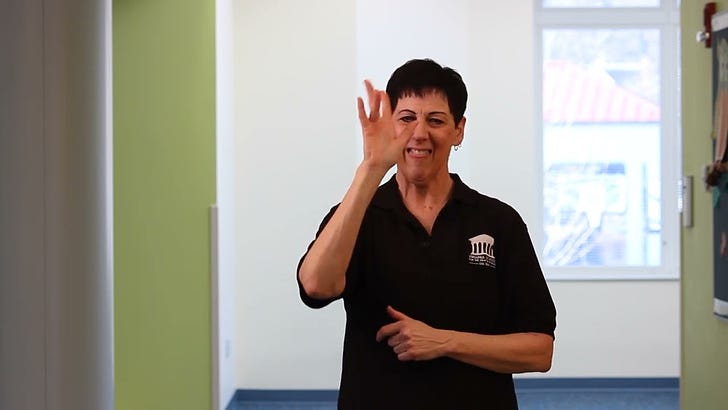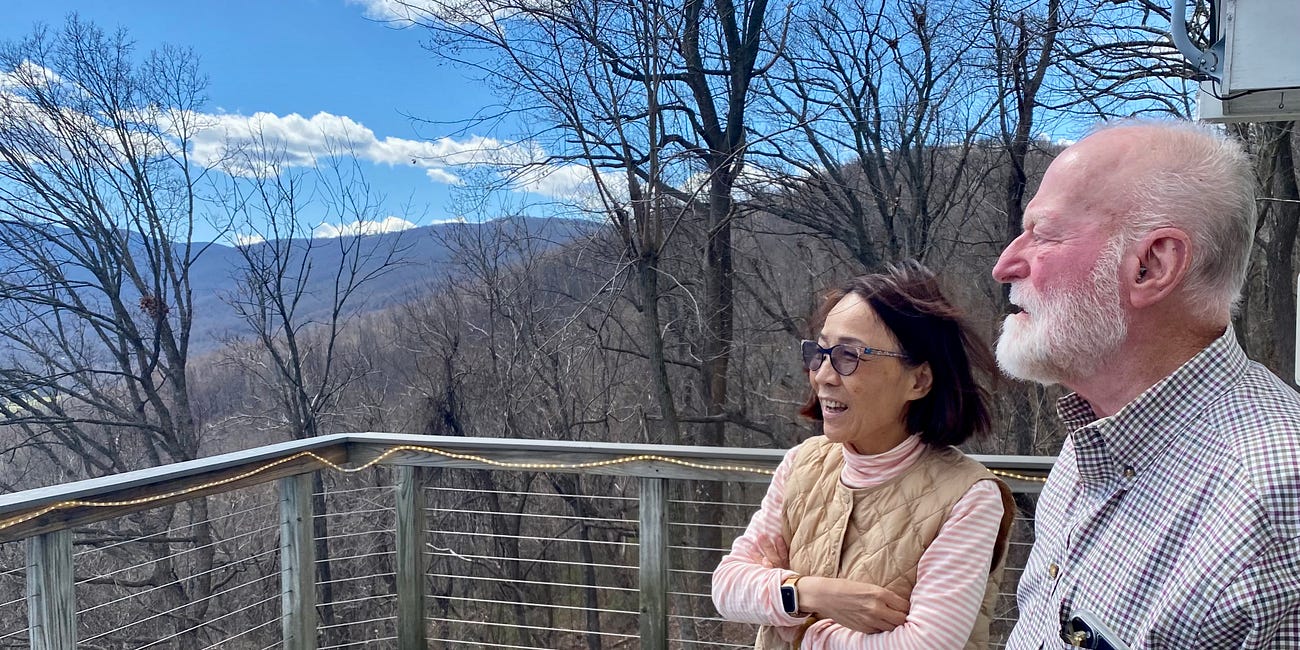Welcome to the current issue of the newsletter for Special Education Today. In this issue I report the goings-on for the previous week, the first week in June of 2024, and I add notes about the previous year as the third year of SET ends.
The structure of the issue includes not just familiar sections, but also readers will find a special section featuring posts from the past year. A free photo, some thanks, the weekly list, the list for the year, and a little editorial. Here goes!
Photo for free
I visited the town of Marion in the Blue Ridge mountains of southwestern Virginia, and I saw this marker embedded in the sidewalk the delightful downtown area.

I do not know how many plaques, tablets, signs, markers, and such like this one exist. Surely, there are many others commemorating what we sometimes call “hospitals” around Earth. There is, to be sure, a history in Australia (Gleason, 1999), Canada (Brown & Redford, 2015), Great Britain (Wright, 2001), the US (Kauffman & Landrum, 2007), and elsewhere (see chapters in Rembis et al., 2018). Educators, parents, psychologists, and others look at that history from different perspectives. Some people see the history as horrific care and others see it as compassionate care. Whatever one’s view about the history of institutional care, I think the history merits marking and remarking. Disabilities have been with humans for a long time (see “Trisomies in children who died 1000s of years ago”). We should know what we’ve done to help those who had them in the past.
Status
As noted in the introductory paragraph, this is the final issue of the third year of SET. Although I’ll drop some posts in the coming weeks, few will be announced via the e-mail system; they’ll just appear sporadically on the Web site. Also, I shall not send newsletters for 17 or 24 June 2024; the next planned newsletter will appear 1 July 2024 and it will be the first issue of volume 4.
There are 700 subscribers to SET. Woohoo! Let’s go SETters!
Acknowledgments
Welcome to new members of the community: Oliver L, Liana McC., Nikki B., Frances S., Michele, H., XBDO?, Karie B., Buck O., and D. J. (In addition to the new subscribers, there are new followers…much harder to monitor, but they include Austin A., Justin A., Rafael R., and Sean.
Thanks to pals who comment on posts, but…uhm, I don’t think there were any comments during the previous week!
There were some “likes,” though. Thanks for those expressions of support dropped by Jane B., Kathy, Adelaide D., Paul C., Clay K., and maybe some others.
List of contents
It was a slow week on SET. I only posted three pieces.
Special Education Today newsletter 3(49): What's happened with SET in the week since 27 May 2024?
ASAT newsletter notes now: What's happening over there this month?
Math for students with ASD: What have we learned about teaching math?
To that list I’d like to add an honorary flash of the electrons to ‘Fred’ over at The Fixed Interval for the regularly weekly summary that appears there. In addition to the regular content in the feature, “ABA this week: 05/26/24-06/01/24,” ‘Fred’ included a cluster of links under the heading “Flashback” about Zig and (the late) Therese Engelmann’s book, Give Your Child a Superior Mind. This tiny bit from ‘Fred’ is an excellent illustration of why I recommend that you subscribe to his Substack.
The top posts for volume 3
Over the past 12 months, I’ve published something > 200 posts (probably close to 300). According to the ranking system used by the algorithms of Substack, these are the 10 “top” posts for the 2023-24 volume year. Many of them are behind the paywall (i.e., the bulk of the content is accessible only to paying subscribers), but some are out in the wild!
Sharon Vaughn on misunderstanding SOR
On 10 April 2024, Sharon Vaughn of the University of Texas at Austin will provide a webinar discussing questions related to the “science of reading.” Although Professor Vaughn is an especially highly…
Shanahan: There are no brain-based methods of teaching reading!
I saw a post 13 January 2024 by the widely read psychologist Timothy Shanahan that made a point I have been hoping to read for a long time: "What does brain science have to say about teaching reading…
Effectiveness of special education
Many readers of Special Education Today have likely heard colleagues, experts, politicians, and others say that special education is ineffective. It’s relatively easy to find statements like “special…
Success at a special school
Although some advocates quickly deride special schools because they are, well, special, meaning not general or regular or neighborhood. Despite efforts to include students with disabilities, special …
Friday photos with Larry Maheady
Readers of Special Education Today who are concerned about research examining immediately applicable methods and procedures probably are already familiar with the work of Larry Maheady on evidence-ba…
Drawing a line that's n 7ths of an foot
In mid-November 2023, I posed a problem for readers. In the post I asked that they draw two lines using typical school equipment (straight edge, compass, protractor, pencil, etc.). The difficult part…
World Down Syndrome Day 2024
Welcome to World Down Syndrome Day again! Here’s the lead from a previous post on this day: Individuals who have Down (not “Down’s”) syndrome have physical characteristics that are the result of a gene…
Friday photos on a Tuesday
I was happy to welcome Professor Li-Yu Hung during her visit to the US. Li-Yu is a highly accomplished scholar and teacher educator from Nation Taiwan Normal University in Taipei, Taiwan. She has hos…
Special ed process—Step 1: Eligibility
As indicated in the overview for this series, the very first question that should be addressed in the special education process is whether an individual student is eligible for special education serv…
Lew Polsgrove passed away
Lewis J. Polsgrove, Jr., a long-time professor of special education at Indiana University at Bloomington and a leader among professionals concerned with the success of children and youths with emotio…
Comments
I’m not waxing philosophical in these comments for this issue. Don’t be disappointed, please. It’s not that I don’t have [poop] about which I’d like to opine or rant. There’s time for those comments in the future.
Instead, for this issue, I’m just providing what I hope is a brief and sweet commentary. It’s a thank you to the readers—those from way back and those who have just begun getting their first issues of SET—for sticking with me over these three volumes. I very much appreciate your reading SET and I hope your loyalty has brought you informative and (dare I say?) entertaining news, resources, and ideas.
Please watch for the first issue of volume four at the beginning of July. Please share this and earlier posts with people concerned about kids with disabilities and the special education that they deserve.
And please remember to take care of yourselves and others. Wear your seatbelts. Eat healthy foods. Exercise, Spend time sharing joys with your family and friends, Work on hard stuff…and keep working on it. And, please teach your children well.
JohnL
John Wills Lloyd, Ph.D.
UVA Professor Emeritus
Founder & Editor, https://www.SpecialEducationToday.com/
Editor’s note: I modified this post. The original version included two instances of an entry about a post that appeared in the last year. I removed one of them.—JohnL
References
Brown, I., & Radford, J. P. (2015). The Growth and decline of institutions for people with developmental disabilities in Ontario: 1876-2009. Journal on Developmenta Disabilities, 21(2).
Gleeson, B. J. (1999). Recovering a “subjugated history”: Disability and the institution in the industrial city. Australian Geographical Studies, 37(2), 114-129.
Kauffman, J. M., & Landrum, T. J. (2006). Children and youth with emotional and behavioral disorders: A history of their education. Pro-ED.
Rembis, M., Kudlick, C. J., & Nielsen, K. (Eds.). (2018). The Oxford handbook of disability history. Oxford.
Wright, D. (2001). Mental Disability in Victorian England: The Earlswood Asylum 1847-1901. Clarendon Press.












Cool info on 19th century and ancient history. Thanks.